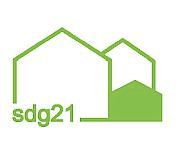On 26 April 2017, the Agency for Renewable Energies in Berlin honoured the Saxon-Anhalt town of Burg for its commitment as Energy Municipality of the Month. A tenant power project in the town ensures that 230 tenants can obtain solar power to cover part of their electricity requirements directly from the roof of their apartments. "Tenant power projects are ideal for driving the energy transition locally and involving many citizens at the same time - either by participating financially in the systems or by purchasing green electricity," explains Nils Boenigk, Deputy Managing Director of the Renewable Energy Agency.
As part of the city's first tenant electricity project, the local public utility operates photovoltaic systems with a total output of 283 kilowatts peak on the roofs of ten apartment buildings belonging to a housing cooperative.
Source: www.unendlich-viel-energie.de/...regeneratives-mieterstromprojekt-in-burg...
Keywords: Stakeholders, Stock, Renewable, Climate protection, News Blog Saxony-Anhalt, PV, Environmental policy

